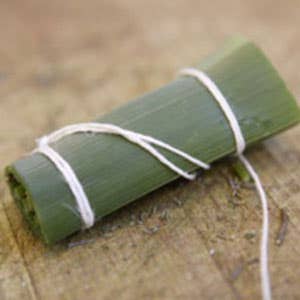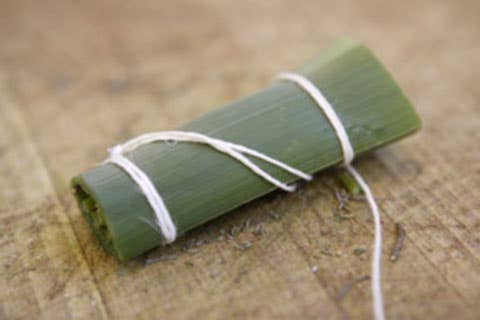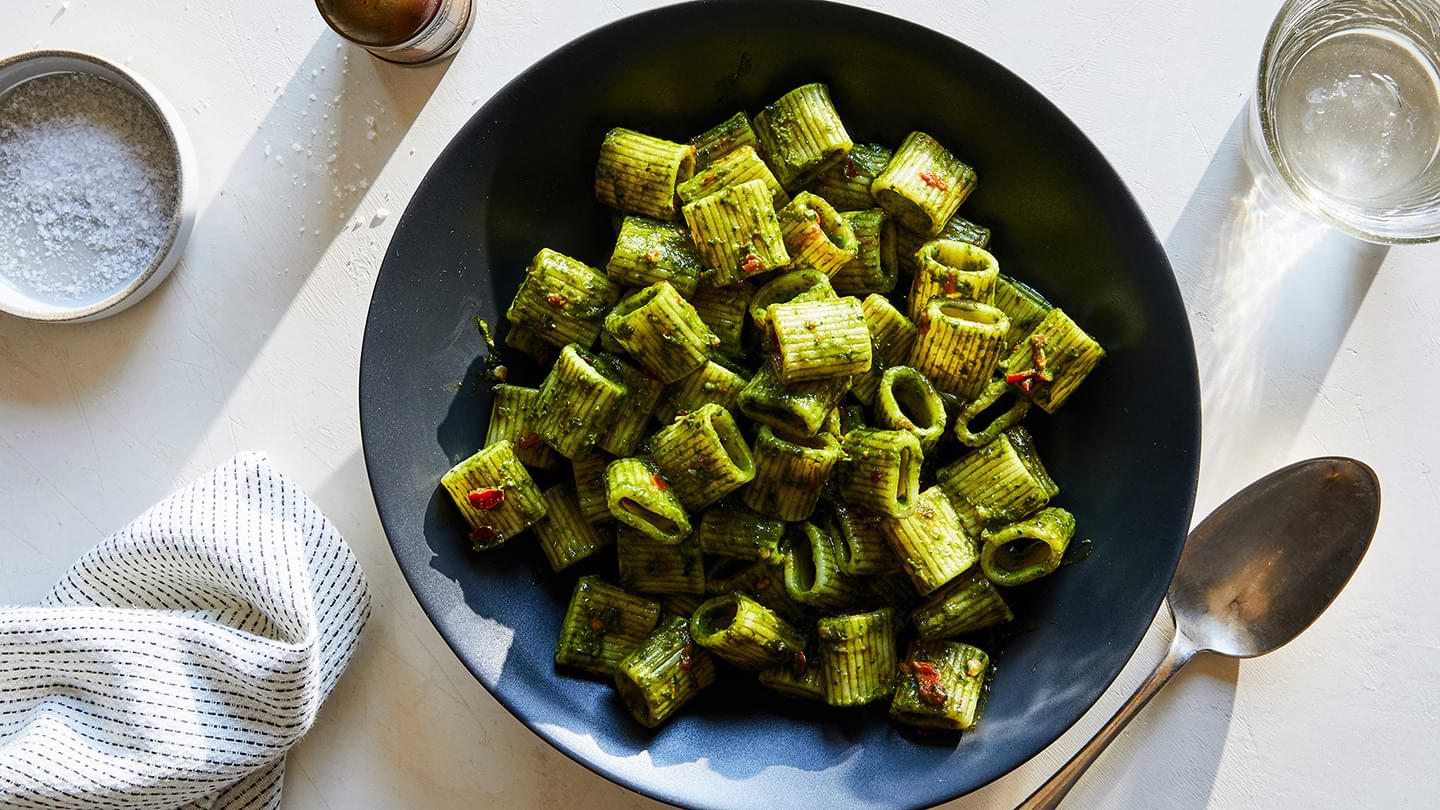

"An experienced saucier uses herbs at several stages of the sauce-making process," writes author James Peterson in his seminal book Sauces: Classical and Contemporary Sauce Making. A bouquet garni—a neatly tied bundle of parsley, thyme, and bay leaf—adds a layer of herbaceous flavor to stocks, the first stage of preparing a sauce. Usually made by tying together herbs with kitchen twine or enclosing them in cheesecloth; at Le Ferrandi, the famed cooking school in Paris, students take a more resourceful approach. Using items that are usually thrown away—namely the tough outer leaves of leeks—to encase fresh sprigs of flat-leaf parsley, thyme and other aromatics.
Ingredients
- 2 outer green leek leaves
- 15 sprigs flat-leaf parsley
- 2 sprigs fresh thyme
- 2 dried bay leaves
Instructions
Step 1
Step 2
Step 3
- Trim the ends off the leek leaves to make two 7"-long pieces. Place parsley, thyme, and bay leaves in between the leek leaves.
- Using an 18"-long piece of kitchen twine, wrap tightly to form a packet.
- Trim excess twine; add to sauce or stock.
Keep Reading
Continue to Next Story










